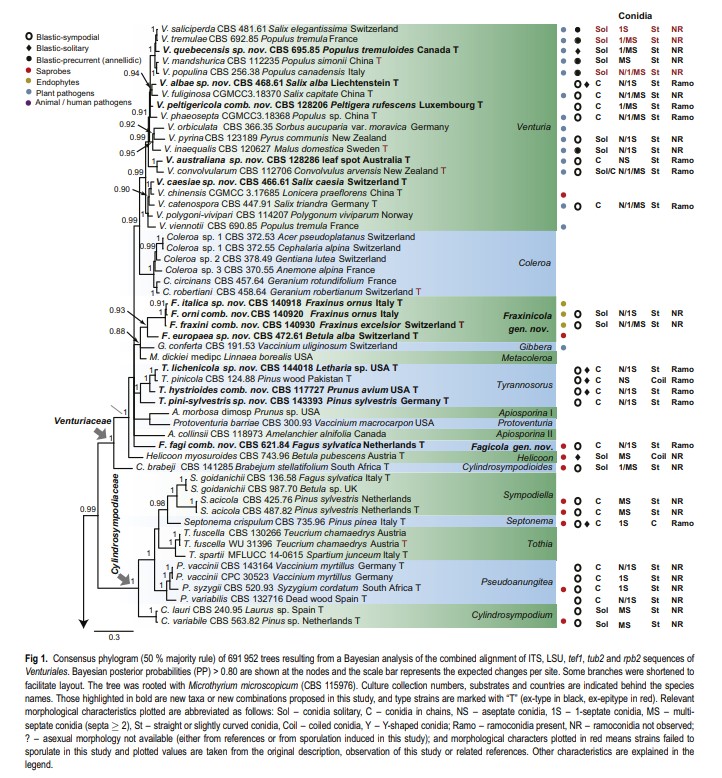Cylindrosympodiaceae Crous, M. Shen & Y. Zhang ter, fam. nov.
MycoBank number: MB 831510; Index Fungorum number: IF 831510; Facesoffungi number: FoF 12984;
Mycelium consisting of branched, pale to medium brown, smooth, septate hyphae. Conidiophores solitary, erect, septate, subcylindrical to cylindrical, medium brown to brown, smooth, straight to flexuous, sometimes rejuvenating percurrently. Conidiogenous cells terminal or intercalary, subcylindrical to clavate, pale to medium brown, mono- or polyblastic, sometimes sympodial; conidiogenous loci sometimes arranged in a rachis, flat or prominent, thickened or unthickened, somewhat darkened and refractive. Conidia in chains or rarely solitary, subcylindrical, ampulliform to fusoid-ellipsoid, acicular, hyaline, pale to medium brown, smooth, prominently guttulate, septate or aseptate; hila truncate, sometimes darkened and refractive (adapted from De Hoog 1985, Crous et al. 2007a, b, 2018, 2019a).
Type genus: Cylindrosympodium W.B. Kendr. & R.F. Casta~neda
Notes: Phylogenetically, Cylindrosympodium, Pseudoanungitea, Sympodiella and Tothia formed a fully supported clade (PP = 1), sister to the Venturiaceae (Fig. 1). Morphologically, the hyphomycetous asexual morph, blastic conidiogenesis, subcylindrical to clavate, pale to medium brown conidiogenous cells, as well as the solitary or concatenate, subcylindrical, ampulliform to fusoid- ellipsoid conidia point to Venturiales. Ecologically, members of Cylindrosympodium, Pseudoanungitea, Sympodiella and Tothia are mostly saprophytic on woody plant hosts, such as Pinaceae, Lauraceae, Myrtaceae or Ericaceae (Crous et al. 2007b, 2018, 2019a). Thus, a new family, Cylindrosympodiaceae, is pro- posed to accommodate these genera.

Genera
Tothia
